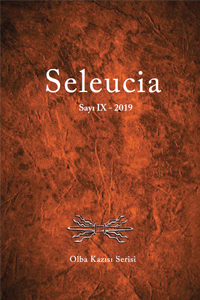Roma Devletinin Hıristiyanlığı Ortadan Kaldırmaya Yönelik Son Hamlesi: Büyük Takibat 303–311
Diocletianus’un 23 Şubat 303 tarihli İlk Takibat Edictumu’ndan, 313 tarihinde Licinius ve Constantinus tarafından ilan edilen Milano Fermanı’na kadar geçen 10 yıllık süreçte, Hıristiyanlara karşı yapılan baskı ve zulümler Hıristiyanlık tarihinde “Büyük Takibat” olarak adlandırılmaktadır. Büyük Takibat Hıristiyanlık dininin ve Hıristiyanların en son ve en geniş kapsamlı kovuşturmasıdır. Hem Roma Tarihindeki hem de Hıristiyanlık tarihindeki en önemli kırılma noktalarından biridir. Diocletianus’un hükümdarlığının son yıllarında bir dizi fermanlar çerçevesinde başlatılan takibat, imparatorluğun her tarafında aynı biçimde uygulanmamıştır. Tetrarkhların kişisel inisiyatiflerine bağlı olarak uygulama farklı coğrafyalarda farklı biçimlerde gerçekleşmiştir. Pek çok Hıristiyan bu kıyımlar sırasında hayatını kaybetmiştir. 313 yılında Constantinus ve Licinius tarafından ilan edilen Milano fermanıyla takibata yasal olarak son verilmiştir.
Anahtar Kelimeler:
Büyük Takibat, Diocletianus, Galerius, Birinci Edictum, İkinci Edictum, Üçüncü Edictum, Dördüncü Edictum
Roma Devletinin Hıristiyanlığı Ortadan Kaldırmaya Yönelik Son Hamlesi: Büyük Takibat 303–311
The persecutions and pressures against the Christians in the ten years from the beginning of Diocletianus’ First Edictum of persecution on 23 February 303 to the edict of Licinius and Constantinus declared in 313 is known as the “Great Persecution”. Diocletianus’ Persecution was the Empire’s last, largest and bloodiest official persecution of Christianity. Furthermore, it was the most important breaking point both for the history of the Christians and the Romans. In the last phase of his reign, Diocletian’s edicts of persecution in the form of a series of writs were not equally applied all over the Empire. The implementation was ultimately realized through different forms in diverse regions depending on the respective initiatives of Tetrarchs. A great deal of Christians lost their lives during these massacres. The Edict of Milan issued in 313 by Constantinus and Licinius officially terminated the persecution.
Keywords:
Great Persecution, Diocletian, Galerius, First Edict, Second Edict, Third Edict, Fourth Edict.,
___
- Alexander 1980 Alexander, J. S., “ The Motive for a distinction between Donatus of Carthage and Donatus of Casae Nigrae”. The Journal of Theological Studies 31:2 (1980): 540-547.
- Barnes 1968 Barnes, T. D. “Legislation Against the Christians” .Journal of Roman Studies 58:1-2 (1968): 32-50.
- Clarke 2005 Clarke, G. “Third-century Christianity”, CAH 12: The Crisis of Empire, a.d. 193–337, Cambridge University Press, New York 2005 (Second Edition),s. 589-672.
- Corcoran 1996 Corcoran, S. The Empire of the Tetrarchs. Imperial Pronouncement and Goverment AD 284-324. Oxford: Clarendon Press.
- Cornell- Matthews 1988 Cornell, T. Ve J. Matthews. Roma Dünyası. İletişim Atlaslı Büyük Uygarlıklar Ansiklopedisi 5.cilt. Çev. Şadan Karadeniz. İstanbul: İletişim Yayınları.
- Euseb. Hist. eccl. Eusebius, Historia Ecclesiastica : NPNF2-01. Eusebius Pamphilius: Church History, Life of Constantine, Oration in Praise of Constantine by Eusebius Pamphilius, Christian Classics Ethereal Library, http://www.ccel. org/ccel/schaff/npnf201.html.
- Euseb. Mart. Palest. Eusebius, De Martyribus Palestinae: NPNF2-01. Eusebius Pamphilius: Church History, Life of Constantine, Oration in Praise of Constantine by Eusebius Pamphilius, Christian Classics Ethereal Library, http://www. ccel.org/ccel/schaff/npnf201.html. Church History içinde s.724-751.
- Freeman 2003 Freeman, C., Mısır, Yunan ve Roma. Antik Akdeniz Uygarlıkları. Çev. S. Kemal Angı. Ankara: Dost Kitabevi Yayınları (Orijinal baskı 1996).
- Gaddis 2005 Gaddis, M. There is no crime for those who have Christ: Religious violence in the Christian Roman Empire. Berkeley: University of California Press.
- Gregory 2008 Gregory, T.E. Bizans Tarihi. Çev. E. Ermert. İstanbul: Yapı Kredi Yayınları.
- Gustafson 1994 Gustafson, M. “Condemnation to the Mines in the Later Roman Empire”. The Harvard Theological Review, Vol. 87, No. 4 (Oct., 1994): 421-433.
- Haas 1983 Haas, Ch. “Imperial Religious Policy and Valerian’s Persecution of the Church, A.D. 257-260”. Church History, Vol. 52, No. 2 (Jun., 1983): 133-144.
- İznik 2009 İznik, E. “ Pagan Bir İmparatorluğun Hıristiyan İmparatorluğa Dönüşümü”, Doğu-Batı 49 (2009): 4176.
- Jones 1964 Jones, A.H.M. The Later Roman Empire 284-602. A Social Economic and administrative Survey I-II-III. Oxford: Basil Blackwell.
- Keresztes 1983 Keresztes, P. “From the Great Persecution to the Peace of Galerius”.Vigiliae Christianae, Vol. 37, No. 4 (Dec., 1983): 379-399.
- Kienast 1992 Kienast, D. Römische Kaisertabelle. Grundzüge einer römischen Kaiserchronologie. Darmstadt: Wiss. Buchges.
- Lactant. De Mort. Pers Lucius Caecilius Firmiānus Lactantius Lactantius, De mortibus persecutorum: http://www.thelatinlibrary.com/lactantius/demort. shtml.
- Luka İncili Kutsal Kitap. Eski ve Yeni Anlaşma (Tevrat, Zebur, İncil). İstanbul 2001: Yeni Yaşam Yayınları.
- Millar 1977 Millar, F. The Emperor in the Roman World (31 BC – AD 337). Ithaca, New York : Cornell Univercity Press.
- Mitchell 1999 Mitchell, S. Anatolia. Land, Men, and Gods in Asia Minor. Volume II: The rise of church. Oxford: Oxford Univercity Press.
- Mommsen 1999 Mommsen, Th. A history of Rome under Emperors. Ed. Thomas Wiedemann. London and New York: Routledge.
- Plin. Ep. Plinius, Epistulae: Genç Plinius’un Anadolu Mektupları. Plinius, Epistulae, 10.Kitap. Çev. Çiğdem Dürüşken - Erendiz Özbayoğlu. İstanbul: Yapı Kredi Yayınları.
- Ste. Croix 1954 de Ste-Croix , G.E.M. “Aspects of the «Great» Persecution”. The Harvard Theological Review, Vol. 47, No. 2 (Apr., 1954): 75-113.
- Ste-Croix 1963 de Ste-Croix , G.E.M. “Why Were the Early Christians Persecuted?” Past & Present 26 (1963): 6-38.
- Suet. Nero C. Suetonius Tranquillus, Nero, Ed. Alexander Thomson.http://www.perseus.tufts.edu/hopper/text?do c=Perseus%3Atext%3A1999.02.0132%3Alife%3Dner o%3Achapter%3D16.
- Tac., ann. Cornelius Tacitus, Annales: The Annals, Alfred John Church, William Jackson Brodribb, Ed.http://www. perseus.tufts.edu/hopper/text?doc=Perseus%3Atext%3 A1999.02.0078%3Abook%3D15%3Achapter%3D44.
- Tert., Apol. Quintus Septimius Florens Tertullianus, Apologeticus: The Apology for the Christians http://www.intratext. com/IXT/ENG2035/
- Williams 2000 Williams, S. Diocletian and the Roman Recovery. London: Routledg
- ISSN: 2148-4120
- Başlangıç: 2011
- Yayıncı: Bilgin Kültür Sanat Yayınevi
Sayıdaki Diğer Makaleler
Geç Antik Dönem’de Cılıcıa Ve Isavrıa’da Kilise Sayısının Artış Nedenleri Üzerine Bir Deneme
Isavrıa Dağlarında Hıristiyan Manastırcılığının Bir Örneği: Olba Manastırı
Murat ÖZYILDIRIM, H. Sibel ÜNALAN
Roma Devletinin Hıristiyanlığı Ortadan Kaldırmaya Yönelik Son Hamlesi: Büyük Takibat 303–311
Son Arkeolojik Bulgular Işığında Aziz Paulus’un İkinci Kutsal Görev Gezisinde Troas Yolculuğu
Bizans Sikkelerinde Yer Alan Göksel Varlıklar “Kerubim Ve Serafim”
Erken Bizans Camcılığı: Kimliği ve Niteliği Üzerine Düşünceler
Some Observatıons On Monotheısm In Cılıcıa
